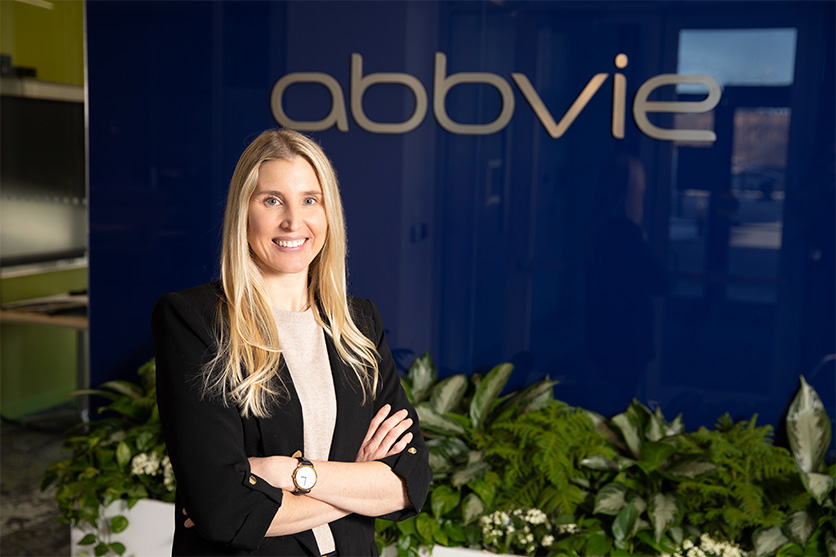Biostatistics and Beyond: One Alumna’s Journey into the Pharmaceutical Industry

By Hal Conick
February 10, 2025
Growing up, Hannah Palac, ’14 MS, had a curious mind, finding herself captivated by medicine, marine biology, and psychology. Fascinated by all things science, she considered several fields until ultimately enrolling in Northwestern University’s Master of Science in Biostatistics and Epidemiology program. That decision led to her where she is today, working as a prominent statistician at a global biopharmaceutical company.
“It’s been an amazing journey, and though it was somewhat unexpected, I’ve enjoyed every minute of it,” said Palac. “The faculty at Northwestern were great and helped me gain the confidence and knowledge I needed to succeed in this work.”
Palac was initially drawn to the master’s program (now the Master of Science in Biostatistics (MS-Bio)) because of its focus on practical training, giving her a realistic view of the day-to-day work she would be doing as a biostatistician. As a life-long lover of math, she relished the prospect of a career fueled by that passion.

The faculty at Northwestern were great and helped me gain the confidence and knowledge I needed to succeed in this work.”
The coursework gave Palac a solid foundation in technical skills and statistical theory — like regression and survival analysis — while also allowing her to apply what she had learned to research questions. This, she now knows, is exactly how a biostatistician works each day.
As Palac moved deeper into her degree, she realized that she enjoyed the teaching moments when professors would write complex equations on the whiteboard. Understanding them was hard work, but she felt joy when everything clicked and, soon after, was able to use those same concepts in her coursework. “It was very motivating,” said Palac.
Her professors, like Jody Ciolino, PhD, were especially helpful in breaking down the complex subject matter. Palac recalls her clinical trials class being particularly rigorous, but the faculty were thorough and always helpful. Later, Palac joined the Biostatistics Collaboration Center, where Ciolino served as her boss and mentor.
For her capstone project, Palac studied rates of kidney disease over thirteen years in the U.S. adolescents. It was a difficult, time-intensive project with a lot of late nights that pushed her to grow.
“I enjoyed that entire process,” said Palac. “A thesis is a lot of work, but I found the analysis work enjoyable and I still do today.”
From the time she started in the master’s program to the end, Palac noticed a jump in her confidence. Coming into Feinberg still a little uncertain, she knew that she wanted to be a statistician by the time she graduated. After her thesis, Palac had clear evidence that she could do the work well, but also that she could enjoy the work.
After graduation, Palac worked at the Biostatistics Collaboration Center, supporting researchers at Lurie Children's Hospital, then spent time with the Center for Behavioral Intervention Technology. Now, she works as senior manager in the Safety Statistics Group at AbbVie, a giant in the pharmaceutical research and development world.
When first starting at AbbVie, Palac worked in a traditional statistician role and has since worked up to her current role. The group focuses on examining safety data and provides scientific input on safety-related statistical topics, such as benefit-risk assessments, to help advance medicines to patients.
“I want to look back at my career and know that I’ve made some sort of difference,” said Palac. “My hope is that I do a good job in my various roles to continue advancing in my career. I don't know what that will look like as time goes on, but I've really enjoyed safety statistics.”
Palac knows that the big data boom has led many students to see a clear path toward a career like hers. Palac’s advice to anyone who wants to follow a similar path: Take chances and follow what makes you curious.